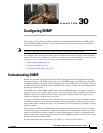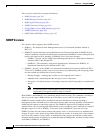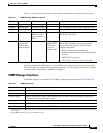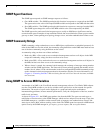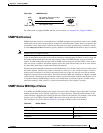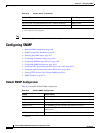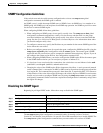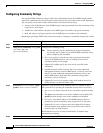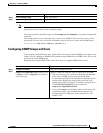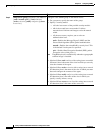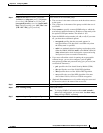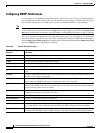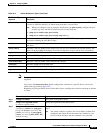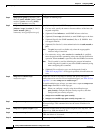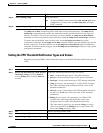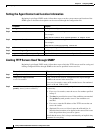
30-9
Catalyst 2960 and 2960-S Switch Software Configuration Guide
OL-8603-09
Chapter 30 Configuring SNMP
Configuring SNMP
Note To disable access for an SNMP community, set the community string for that community to the null
string (do not enter a value for the community string).
To remove a specific community string, use the no snmp-server community string global configuration
command.
This example shows how to assign the string comaccess to SNMP, to allow read-only access, and to
specify that IP access list 4 can use the community string to gain access to the switch SNMP agent:
Switch(config)# snmp-server community comaccess ro 4
Configuring SNMP Groups and Users
You can specify an identification name (engine ID) for the local or remote SNMP server engine on the
switch. You can configure an SNMP server group that maps SNMP users to SNMP views, and you can
add new users to the SNMP group.
Beginning in privileged EXEC mode, follow these steps to configure SNMP on the switch:
Step 5
show running-config Verify your entries.
Step 6
copy running-config startup-config (Optional) Save your entries in the configuration file.
Command Purpose
Command Purpose
Step 1
configure terminal Enter global configuration mode.
Step 2
snmp-server engineID {local engineid-string
| remote ip-address [udp-port port-number]
engineid-string}
Configure a name for either the local or remote copy of SNMP.
• The engineid-string is a 24-character ID string with the name
of the copy of SNMP. You need not specify the entire
24-character engine ID if it has trailing zeros. Specify only the
portion of the engine ID up to the point where only zeros
remain in the value. For example, to configure an engine ID of
123400000000000000000000, you can enter this:
snmp-server engineID local 1234
• If you select remote, specify the ip-address of the device that
contains the remote copy of SNMP and the optional User
Datagram Protocol (UDP) port on the remote device. The
default is 162.



